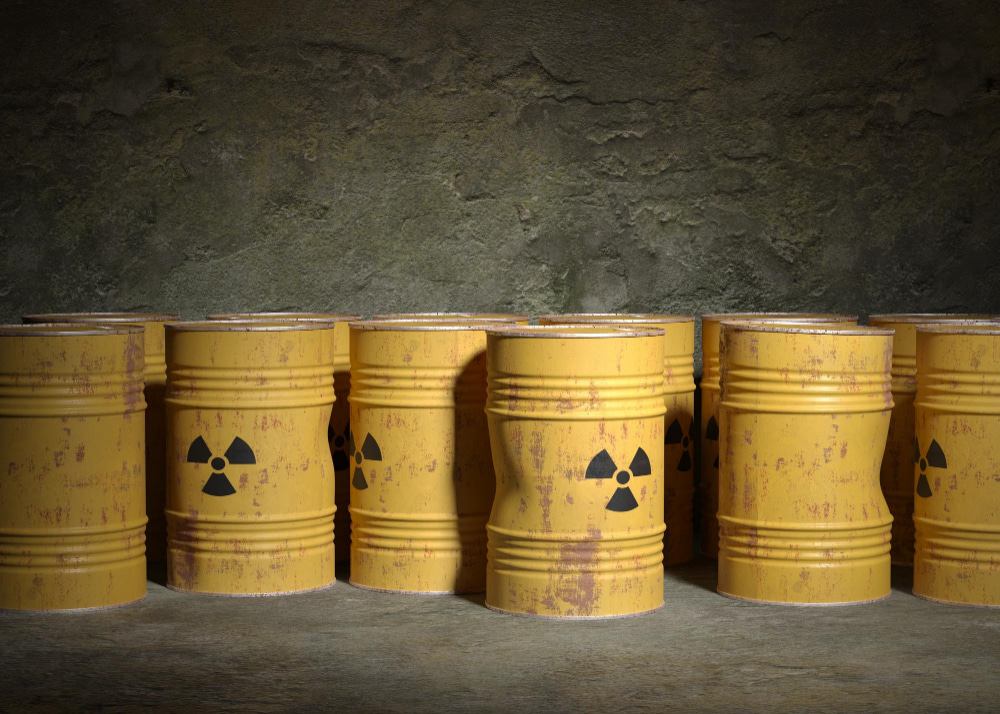Dangerous substances, which are considered toxic substances, can be pure chemicals, radioactive substances and objects that are harmful to animal and human health. These properties are also environmentally dangerous substances if they are not kept under the right conditions during transportation or use.

Hazardous substance classes have been created according to the hazards that the substance may cause within the regulatory frameworks. In other words, the classification of dangerous goods is made according to the hazard classes.
Gasses in the category of toxic substances are substances that have a vapor pressure of 50 °C or higher, or that become completely gaseous at 20 °C, the general atmospheric pressure and contain these substances. Flammable gasses and toxic gasses must be prepared in a way that will not harm human health and the environment during transportation. The flammability of the gasses, the possibility of being suffocating or the ability to oxidize according to the gas properties cause very serious dangers.
Flammable liquids are transported at temperatures below 60-65°C. They are flammable and vaporous substances with a maximum transport temperature or a temperature below this temperature.
The volatile and flammable properties of flammable liquids can cause serious dangers such as environmental hazards during the transportation because of the flame and the possibility of these flames spreading.
Combustible solids, which are among the dangerous substance classes, are materials that easily fit in adverse situations encountered while being transported by the logistics company, may be exposed to some explosives by rubbing so they may cause or contribute to any fire due to these reactive substances.
The dangerous goods classes that are planned to be transported by maritime transport must have the IMDG code, which is an International Code.
This code includes the necessary provisions for the maritime transport activity to be compatible with all other transport activities, without causing any harm to the environment. This code is essential for fast, safe and much more economical execution, minimizing any potential damage. It is stipulated by International Maritime.
Tt is necessary to get service from a professional logistics company in order to transfer a substance or material from one point to another with less effort and cost by sea transportation. Oden Logistics analyzes all your needs regarding maritime transport and logistics sector accurately. Oden helps its customers to save both time and money by providing solutions to its customers. Since 2012, Oden Logistics has been providing international container forwarding service with great devotion, thanks to its wide agency network, which gives utmost importance to customer satisfaction.
Hazardous material and chemical logistics transportation and storage processes include high safety processes that protect the environment and the product.
Dangerous substances which can be transported are as follows:
ADR is a European agreement that ensures the safe transport of dangerous goods and chemicals by road. Some important conditions for the appropriate human and environmental safety have been specified about hazardous substances and chemical logistics. Those working in transportation can work in ADR logistics after receiving training. At the same time, vehicles used in logistics must also comply with ADR conditions.
We take responsibility for the management, transportation and storage of various substances in safety standards:
Hazardous materials have been used in many sectors recently. With the developing technology, dangerous substances can be transported by various methods. Logistics companies offer dangerous goods transportation services by taking certain precautions in order to prevent these materials from causing irreversible disasters and environmental pollution. It is very important for companies to provide logistics services for dangerous goods. The tools used to make the process more effective and efficient during the transportation of dangerous goods have great importance. The safety of the vehicle or vehicles used ensures the most efficient transportation service.
The ideas of destroying, reusing or storing the wastes that arise in cities and industrial facility centers have made the transportation of dangerous goods important. There are some rules that must be followed for the transport of dangerous goods. These rules are obligations that are necessary for the environment, the drivers and logistics employees.
There are some points that logistics companies that want to provide dangerous goods transportation should pay attention before transporting dangerous goods. One of these points is the ADR contract. It is known as the European agreement on the international transport of dangerous goods by road. Hazardous materials must be transported in packages according to the dangerous goods regulation. These substances must be transported in UN-approved packages in order to prevent leakage and spillage. R codes, called chemical substance codes, determine the risk groups of chemical substances. These chemical substances usually explode or burn as a result of contact with any object or element.
Combustible gasses should be stored at the farthest point, especially from logistics workers. They should be kept away from fire. Lighter gas, methane, ethane, ethylene, hydrogen and acetylene are flammable gasses.
Contact Oden Logistics call center for more information about dangerous goods transportation.